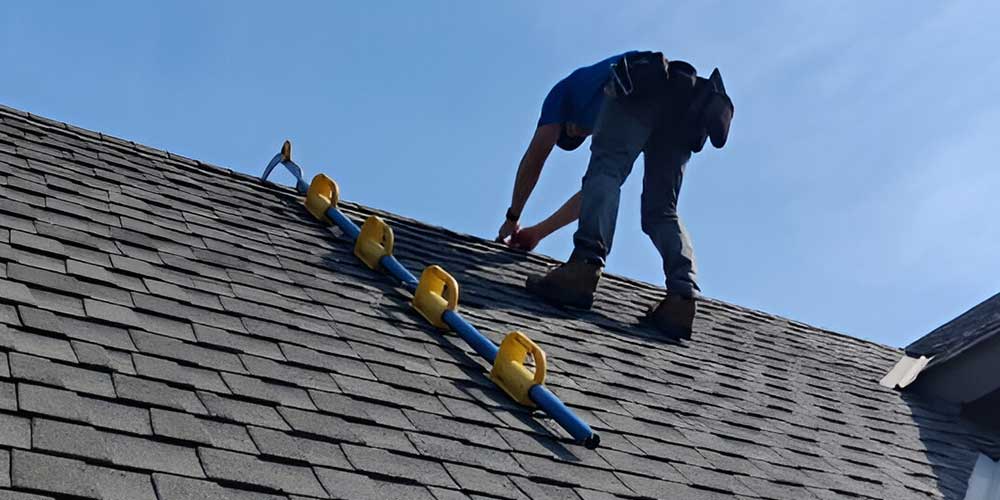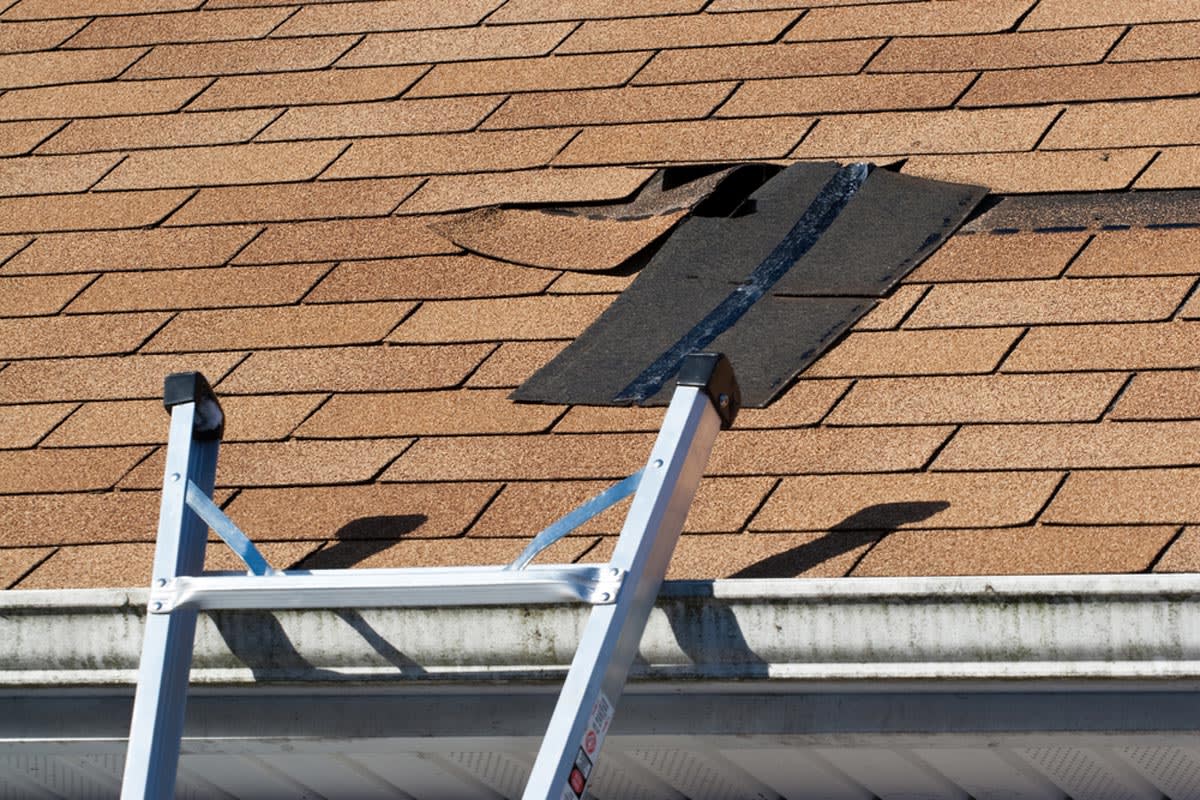Roofing Companies Oahu: Top-Rated Roofers for All Roofing Projects
Roofing Companies Oahu: Top-Rated Roofers for All Roofing Projects
Blog Article
Understanding the Various Sorts Of Roofings: A Comprehensive Overview for Homeowners
With a variety of alternatives-- ranging from the conventional gable to the contemporary level-- each kind offers distinct advantages and obstacles that must straighten with the house owner's specific needs and ecological factors to consider. As we discover the complexities of various roof kinds, it ends up being apparent that one dimension does not fit all; the right selection may stun you.
Saddleback Roof
Saddleback roofs, defined by their triangular form, are among the most prominent roof designs because of their simplicity and effectiveness in shedding water and snow. This style features two sloping sides that satisfy at a ridge, permitting for efficient drain and lessening the risk of water accumulation. The high pitch generally associated with gable roof coverings improves their capacity to handle heavy precipitation, making them suitable for different climates.
Along with their practical advantages, saddleback roofs use aesthetic convenience. They can be adjusted to different building designs, from standard to modern-day homes. The design can also fit additional attributes such as dormer windows, which improve all-natural light and air flow in the attic room area.
Moreover, gable roofs supply ample area for insulation, adding to energy performance. Property owners can choose from a range of roof covering materials, including asphalt shingles, steel, and ceramic tiles, additionally boosting modification choices.
In spite of their benefits, saddleback roofs may call for additional assistance in locations vulnerable to high winds or hefty snowfall. On the whole, the gable roofing system remains a preferred option as a result of its mix of functionality, resilience, and aesthetic appeal.
Flat Roofs
Level roofings are often recognized for their minimal layout and sensible applications, specifically in industrial and business setups (oahu roofing). These roof coverings include a straight or almost horizontal surface area, which permits for simple building and functional room usage. While they might do not have the visual appeal of pitched roofing systems, flat roof coverings provide various benefits, particularly in city settings where making best use of space is crucial
Among the main benefits of level roof coverings is their accessibility. Homeowners can use the roof room for numerous objectives, such as rooftop gardens, terraces, or solar panel setups. In addition, level roofs are commonly a lot more cost-efficient to maintain and install contrasted to their sloped counterparts, as they need fewer products and labor.
Common products utilized for flat roofing systems include built-up roof (BUR), changed asphalt, and single-ply membranes, each offering unique advantages. On the whole, flat roofing systems serve as a versatile and practical choice for numerous home owners and businesses alike.
Hip Roofings
Hip roof coverings are identified by their sloped sides that converge on top, creating a ridge. This design is distinct from gable roof coverings, as all four sides of a hip roof slope downwards toward the wall surfaces, offering an extra stable framework. The angle of the inclines can vary, permitting versatility in building aesthetic appeals and capability.
One of the main advantages of hip roof coverings is their capability to stand up to heavy winds and unfavorable climate condition. The sloped surfaces enable better water drain, reducing the risk of leakages and water damage. In addition, hip roofing systems offer raised attic room area, which can be used for storage space or perhaps exchanged comfortable locations.
However, constructing a hip roof covering can be much more complicated and pricey than less complex roof kinds, such as saddleback roofs. The extra material and labor involved in creating the slopes and making sure appropriate structural stability can cause higher costs. Regardless of these disadvantages, numerous home owners favor hip roof coverings for their longevity, visual charm, and potential for power effectiveness.
Mansard Roofs
Mansard roofs, frequently acknowledged by their distinct four-sided design, feature two slopes on each side, with the lower incline being steeper than the upper. This building design, stemming from France in the 17th century, is not only visually enticing however functional, as it takes full advantage of the functional space in the upper floors of a building. The high reduced slope enables even more clearance, making it an ideal option for attics or loft spaces, which can be converted into living rooms.
Mansard roofing systems are identified by their convenience, fitting numerous building designs, from conventional to modern-day. They can be created with various materials, including asphalt roof shingles, slate, or steel, providing property owners with a variety of choices to match their budget plans and choices. Additionally, the layout permits for the assimilation of dormer home windows, enhancing natural light and ventilation in the upper levels.
Nevertheless, it is important to consider the possible downsides. Mansard roofs might require more maintenance as a result of the intricacy of their design, and their high slopes can be challenging for snow and rain overflow. In general, mansard roofs combine elegance with practicality, making them a prominent choice among home owners looking for distinctive building functions.
Dropped Roofs
As homeowners increasingly look for simplicity and performance in their architectural designs, dropped roof coverings have emerged as a prominent selection. Characterized by a solitary sloping airplane, a shed roof covering presents a minimal aesthetic that enhances numerous home designs, from modern to rustic.
Among the main benefits browse around this site of a shed roof covering is its straightforward building and construction, which typically equates to reduce labor and material expenses. This style allows for effective water drain, lowering the threat of leakages and water damage. Furthermore, the vertical slope offers sufficient area for skylights, enhancing natural light within the interior.
Dropped roof coverings additionally supply adaptability in regards to use. They can linked here be efficiently incorporated right into additions, garages, or outside structures like structures and sheds. Additionally, this roofing system design can accommodate numerous roofing materials, consisting of metal, asphalt shingles, or perhaps eco-friendly roofs, lining up with environment-friendly efforts.
However, it is necessary to consider local climate problems, as heavy snow lots may demand modifications to the roofing system's angle or framework. In general, lost roofings offer a functional and visually pleasing alternative for house owners wanting to optimize capability without compromising design.
Conclusion


Gable roofs, characterized by their triangular shape, are amongst the most prominent roof covering designs due to their simpleness and More hints performance in shedding water and snow. oahu roofing. The steep pitch generally connected with gable roof coverings improves their ability to manage heavy precipitation, making them ideal for various climates
While they might do not have the aesthetic allure of pitched roofings, level roofs provide numerous advantages, specifically in city settings where maximizing space is crucial.

Report this page